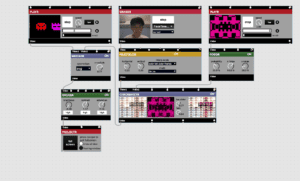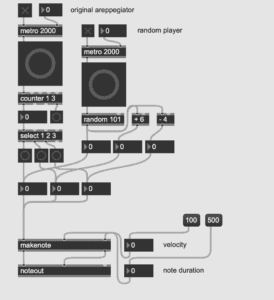Link to Github: https://gist.github.com/gabrielchi/989a29990d74c9fc9a1655292595c090

For this assignment, we were tasked with combining the synthesizer we created in class with a completely new one. This new synthesizer would follow the same formula as the original, however all of the effects used had to be completely different. For the oscillators, I just changed them to use the box wave and sine wave. For the second synthesizer, I added the effects of a sync delay and a flanger, which each drastically changed the sound from the original synth.
For the sync delay, I made it so the delay would follow dotted quarter notes (1/4 notes), to give some sort of rhythm to the overall sound. For the flanger, it creates a strong resonant effect that made the audio signal’s peaks and troughs more intense, creating a more warped sound. This was fed into an audio mixer, which the first synth was also fed into, and then finally the stereo to produce sound.
To me, I felt that the sound was produced was very reminiscent of something out of a sci-fi or retro video game. Although the sound I created was still at a very beginner level, synths in general remind me a lot of old video games or movies like Blade Runner.




